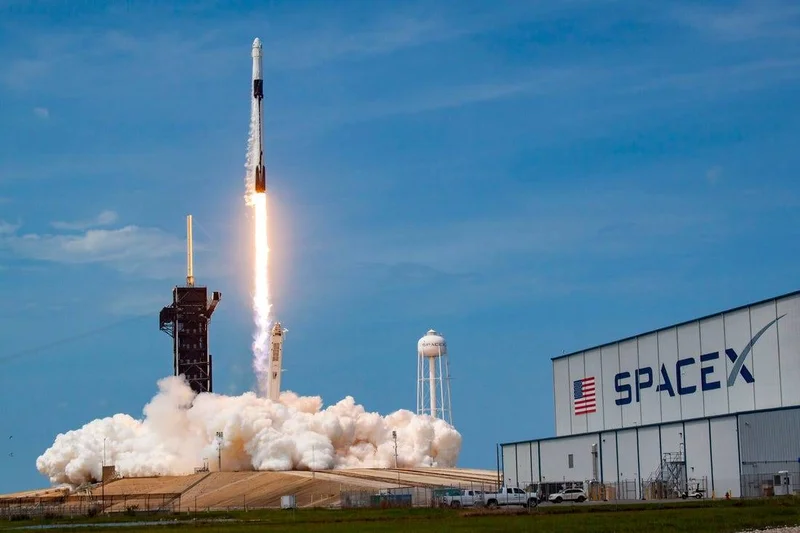The cosmos, it seems, has a peculiar way of sparking both our grandest dreams and our most naive assumptions. On Monday, November 10, 2025, while most of us were probably just trying to get through the week, a very specific kind of drama unfolded: the three-person Chinese Shenzhou-20 crew found themselves effectively stranded on the Tiangong space station. Their return journey, planned for November after an April arrival, was indefinitely postponed. The culprit? A suspected ding from a "tiny piece of space debris" to their return craft. Almost immediately, the digital airwaves, particularly among the more fervent space enthusiasts, filled with a singular, impassioned plea: SpaceX and Musk called on to rescue China's Shenzhou-20 crew.
It’s a romantic notion, isn’t it? The American private company, led by its famously ambitious CEO, swooping in to pluck astronauts from peril, regardless of flag or political affiliation. We’ve seen this script before, or at least, a version of it. Earlier this year, President Trump, with characteristic flair, tasked Elon Musk with rescuing a supposedly "virtually abandoned" Boeing Starliner crew (a situation that, to be more exact, never reached that level of abandonment, with NASA ultimately deeming a SpaceX rescue unnecessary for a 2022 Soyuz incident, for example). Musk, ever the showman, pledged his company would deliver. But let's be clinical for a moment, strip away the hero narrative, and look at the numbers and the cold, hard engineering facts. What I find most telling is the chasm between the public’s emotional call for action and the operational realities.
My analysis suggests that the calls for a SpaceX rescue, while well-intentioned, completely miss the mark on several critical vectors. First, there's the immediate, undeniable issue of hardware. A SpaceX Crew Dragon isn't just sitting in a hangar, fueled and ready for an unscheduled sprint to Tiangong. The next scheduled Crew Dragon launches are months away—March/April 2026 for NASA Crew-12, then June 2026 for Vast-1. These aren't off-the-shelf units; they're purpose-built, rigorously tested, and integrated into complex mission schedules. Expecting one to materialize instantly is like demanding a Formula 1 car be re-engineered on the fly to win a rally race. It’s a different machine, for a different track.
Then we hit the technical snags, and these aren't minor glitches. We're talking about fundamental incompatibility. China’s orbital docking system and Crew Dragon hardware? They don't speak the same language. It's not a matter of plugging in a universal adapter; it’s two entirely distinct architectural philosophies. And let's not even start on spacewalks. The Chinese launch suits aren't rated for EVA (Extravehicular Activity), and Tiangong's Feitian EVA suits are specifically incompatible with SpaceX systems. Even if they could somehow get a Crew Dragon up there, how do you transfer the crew if they can't physically fit through the hatch in their own EVA gear? SpaceX did demonstrate EVA capability in 2024 with Jared Isaacman, but that was a controlled mission with compatible equipment. This is a different ballgame.

And while we're talking about balls, let's not forget the political ones. A joint US-China space rescue mission, involving a private American company, is a geopolitical minefield. The political obstacles are substantial, bordering on insurmountable, given the current climate. It’s a complex dance of national security, intellectual property, and strategic competition. The data points here aren't just about technical capability; they're about the often-overlooked logistical and political friction that makes such an endeavor a non-starter.
Meanwhile, as this theoretical rescue mission dominated headlines, SpaceX was doing what SpaceX does: launching. On the very same Monday, November 10, a Falcon 9 (booster B1096, on its third flight, by the way) was scheduled to launch the Starlink 6-87 mission from Cape Canaveral. This isn't just background noise; it's the core business. This launch, adding 29 more broadband satellites, was pushed later due to FAA limits (10 p.m. - 6 a.m.)—a fascinating data point in itself, highlighting the strain on infrastructure from an air traffic controller shortage during a government shutdown. This mission was set to be Florida's 94th orbital launch in 2025, setting a new annual record, with SpaceX accounting for about 95% of those from the Space Coast. The company is a finely tuned machine, optimized for cadence and payload delivery, not impromptu, cross-national emergency services.
The deeper issue this incident exposes, beyond the immediate plight of the Shenzhou-20 crew, is the critical need for standardized spaceflight systems. We’re in an era of growing orbital congestion, with space debris — ironically, perhaps from an old Chinese anti-satellite weapon test — becoming an ever-present threat. Yet, we lack the universal "jumper cables" or "tow hooks" for space. This isn't just about one crew; it's a systemic vulnerability. Tiangong itself isn’t designed for extended stays of more than three crew, adding another layer of urgency and complexity if the current crew has to wait for a Chinese replacement (Shenzhou-22, perhaps earlier than planned).
The public’s desire for a rapid, heroic intervention, while understandable, clashes violently with the granular reality of space operations. We're not talking about a simple car breakdown where any mechanic can help. This is more akin to expecting a highly specialized, proprietary sub-orbital vehicle designed for one specific type of journey to suddenly adapt to rescue a crew from a deep-sea submersible, using entirely different atmospheric pressures, docking mechanisms, and oxygen mixes. The numbers, the hardware, and the geopolitical landscape simply don't align. The Shenzhou-20 crew’s situation is serious, but a SpaceX rescue, at this juncture, is a fantasy built on sentiment, not data.